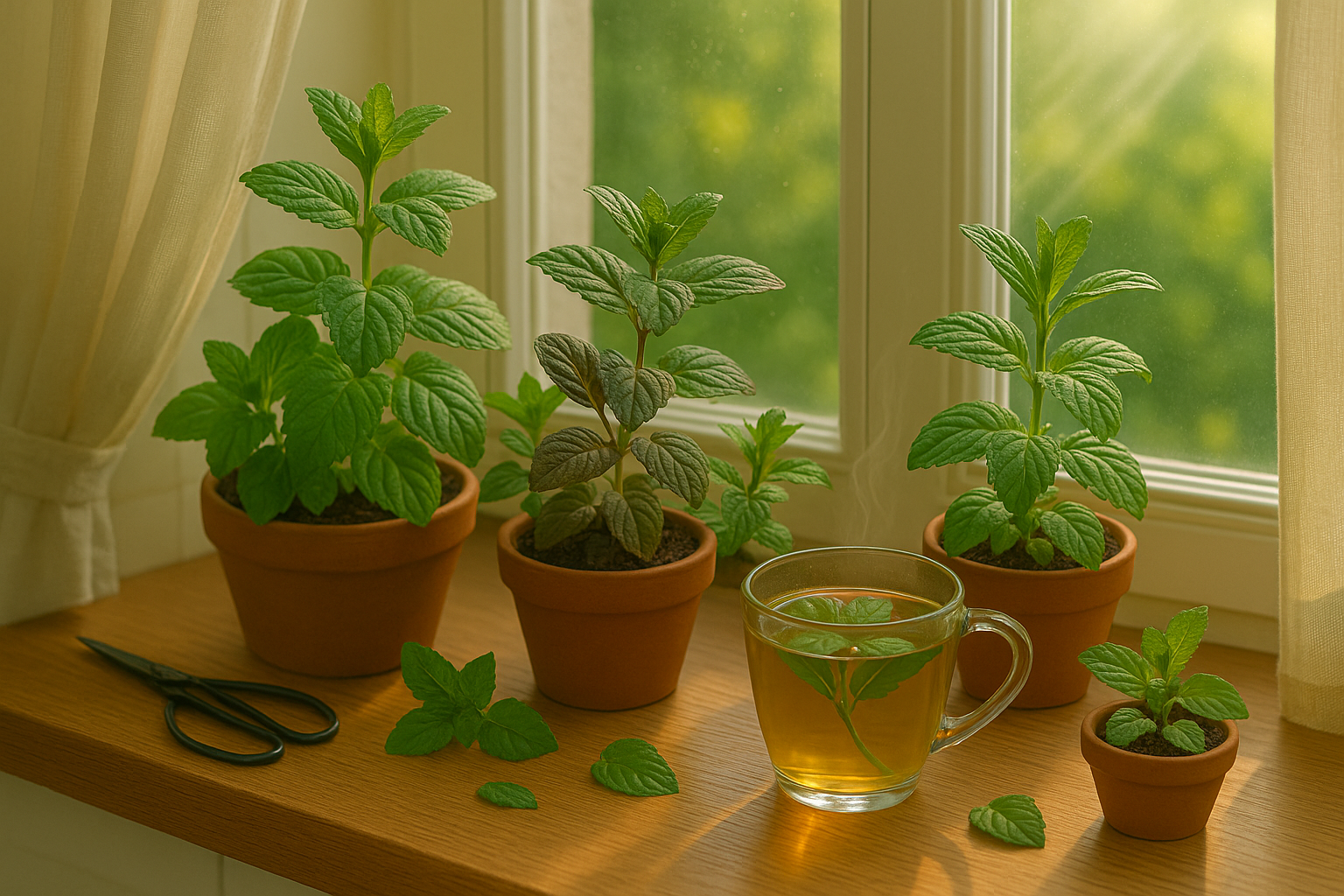Introduction
Does mint need sun or shade? If you’re like many home gardeners or kitchen enthusiasts, you’ve probably wondered about mint’s ideal growing conditions. Mint is a favorite herb for fresh teas, recipes, and garnishes, but knowing whether it thrives best in sunlight or prefers a bit of shade can make all the difference in your harvest.
In this blog post, we’ll cover everything you need to know about mint’s sun and shade preferences, offering practical tips on how to create the perfect environment for lush, flavorful leaves. You’ll learn how much light your mint plant really needs, simple care strategies for maximum growth, solutions for common mint problems, and answers to the most frequently asked questions so you can keep your mint happy and healthy all season long.
Whether you’re growing mint in a backyard bed or on a kitchen windowsill, this guide has you covered.
Understanding Mint’s Sunlight Preferences
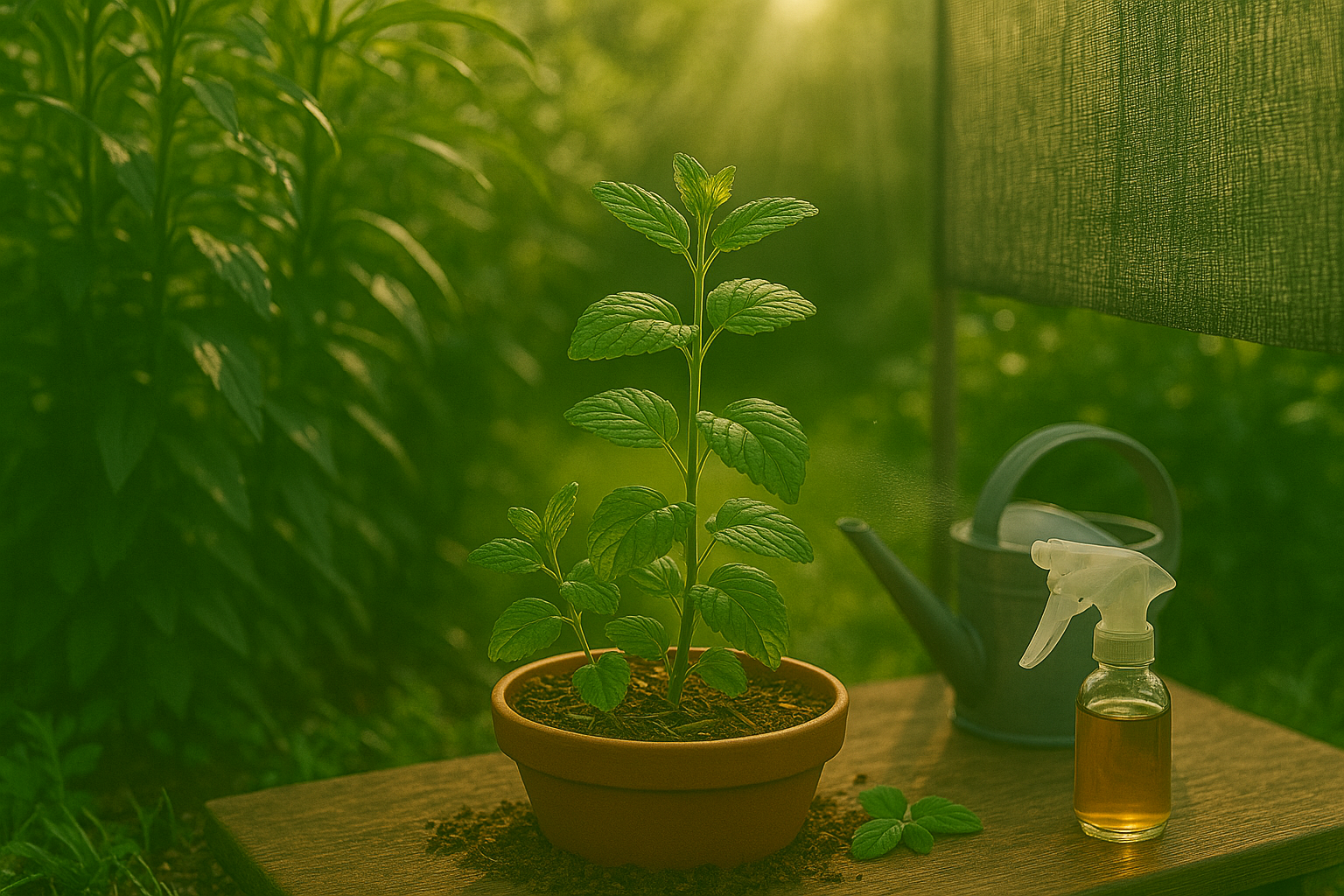
Mint is a hardy herb that can adapt to different levels of sunlight, but knowing its ideal growing conditions will help you harvest the healthiest, most flavorful leaves. Most mint varieties thrive with about 3 to 6 hours of direct sunlight per day, though they’re pretty forgiving if you don’t have a perfectly sunny spot.
In gardening terms:
- Full sun: over 6 hours of direct sunlight daily
- Partial sun: about 3 to 6 hours of direct sunlight
- Shade: less than 3 hours or only indirect light
Mint prefers partial sun rather than full sun, especially in hot summer regions—too much intense heat can scorch the leaves, causing wilting or brown spots. If you only have shade available, mint will still grow, but it may get leggy and the flavor might be less robust.
Here’s a practical tip: if you’re growing mint indoors or on a shaded balcony, try moving the pot to catch gentle morning light or filter the midday sun with a sheer curtain. For outdoor gardeners, planting mint on the east side of your house, where it receives morning sun and afternoon shade, works well. Alternatively, tuck it under the light shade of taller plants.
Ultimately, slightly filtered, gentle sunlight is best—aim for a spot where mint gets good light but is protected from harsh midday rays, and you’ll enjoy lush, aromatic growth all season long.
Mint Varieties
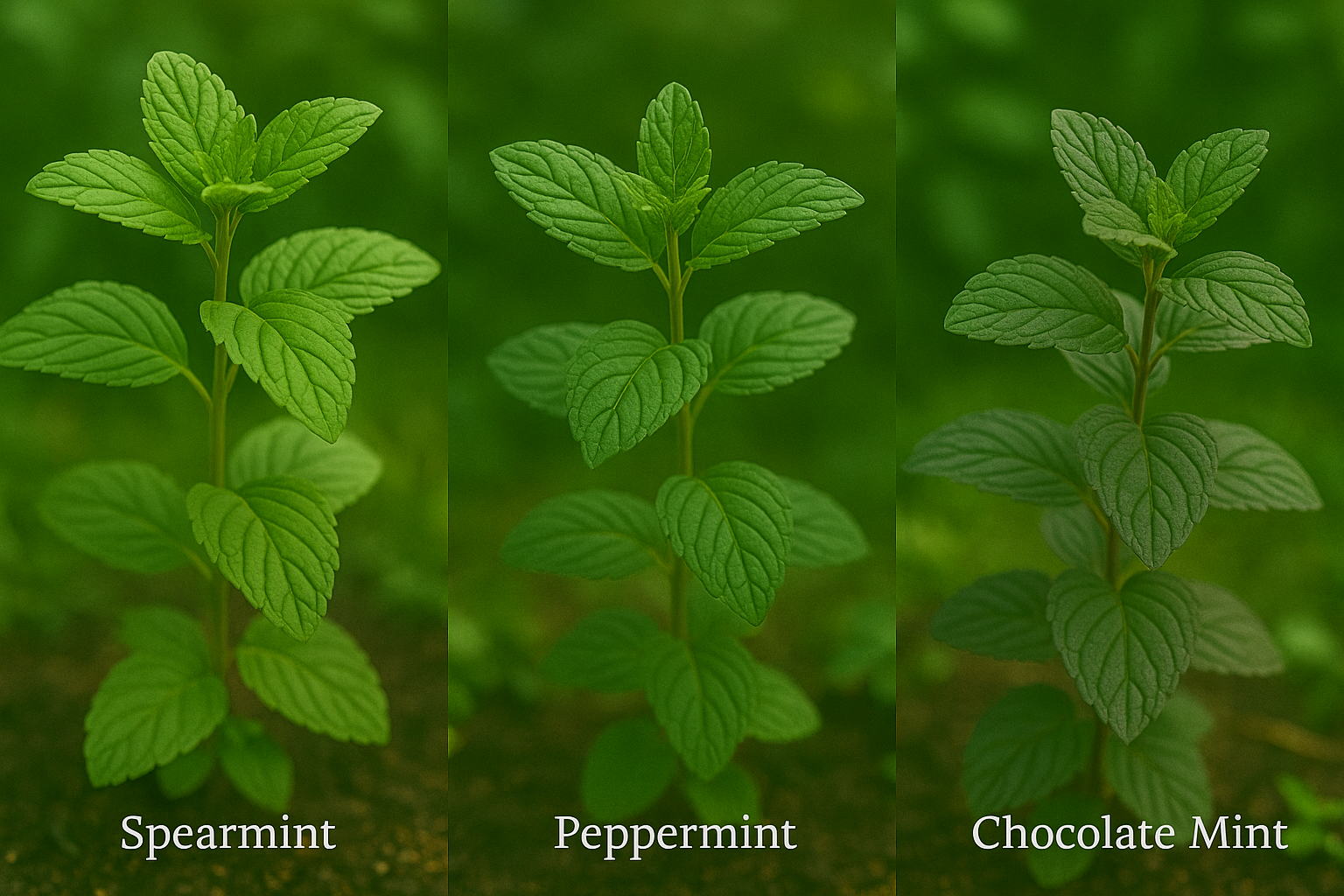
When it comes to growing mint, popular varieties like peppermint, spearmint, and chocolate mint are favorites for home gardens, each offering unique flavors and scents. Most mints thrive in partial to full sunlight, but there are subtle differences to keep in mind.
Spearmint, known for its refreshing flavor, is quite adaptable and can tolerate a mix of sun and shade, making it an excellent choice for spots that only get morning or filtered sunlight. Peppermint, with its sharper, menthol-rich taste, prefers more sunshine—ideally around four to six hours of direct light daily for the best leaf production. Chocolate mint, which boasts a subtle chocolatey aroma, is a bit more shade-tolerant and does well in areas where the sun is less intense, such as a north-facing window or a dappled garden bed.
If your home or garden gets abundant sun, peppermint is a reliable pick. For shadier areas, choose spearmint or chocolate mint—these varieties stay healthy and flavorful even with just a few hours of indirect light. It’s also helpful to move mint pots around to find the sweet spot for each type. Ultimately, matching your mint variety to your available light means healthier plants and more flavorful harvests, no matter your growing conditions.
Where (and How) to Grow Mint for Best Results
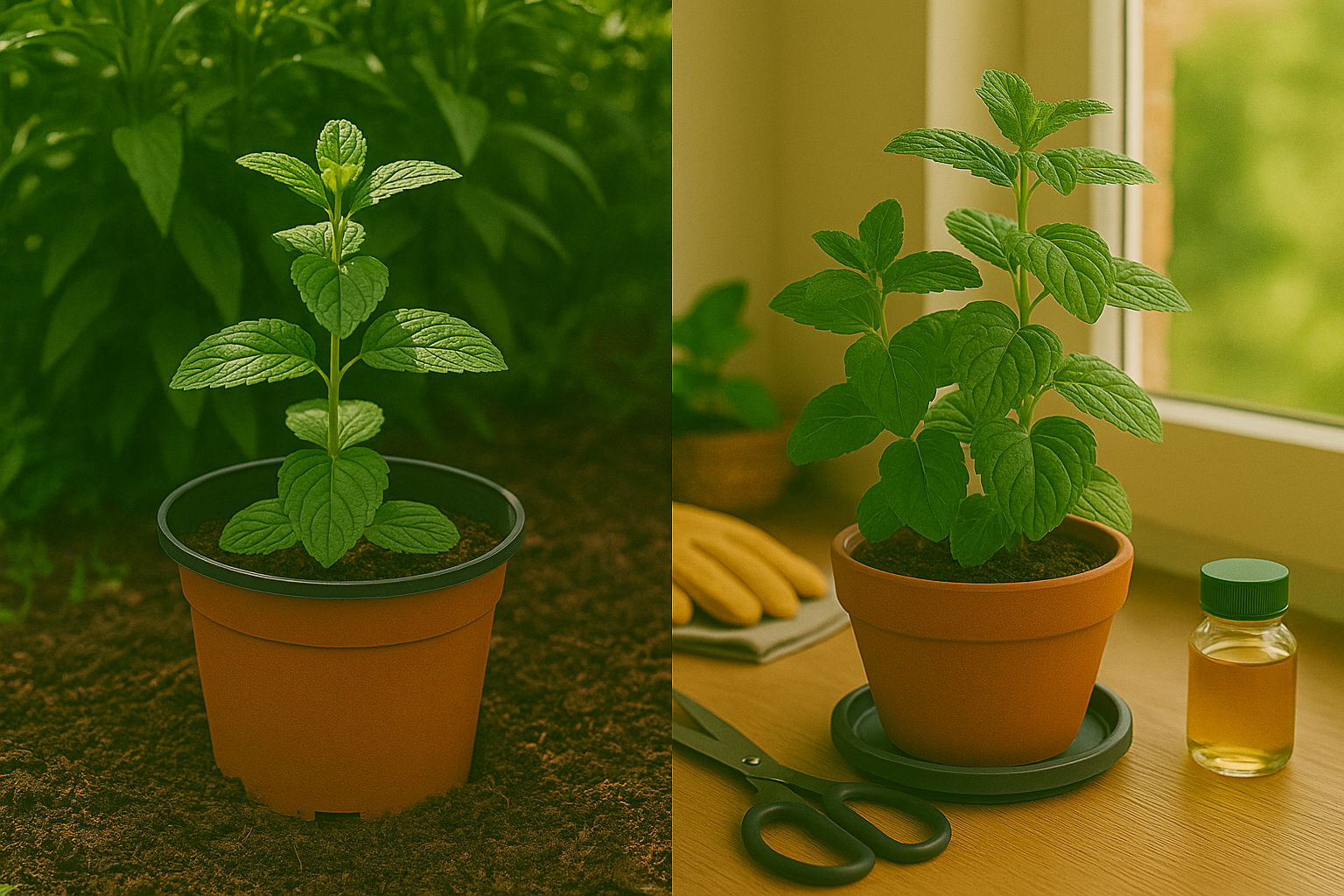
Mint is one of the most versatile herbs you can grow, thriving both outdoors in gardens and indoors on sunny windowsills. For outdoor planting, choose a spot with partial shade to full sun—ideally, morning sunlight with some afternoon protection in hotter climates.
Mint loves moist, well-drained soil and will quickly spread if given the chance, so many gardeners prefer planting mint in containers, even outside. Growing mint in pots or containers helps control its invasive roots and keeps it from overtaking the garden. Containers also let you move the plant to catch the best sunlight or shelter it from harsh weather.
However, if you want to plant mint directly in your garden, consider sinking a pot or a bottomless bucket in the ground to form a root barrier, or regularly trim runners to prevent spreading.
Indoors, mint does best on a bright windowsill with at least four to six hours of sunlight per day; a south-facing window is ideal. Rotate the pot every week to encourage even growth and prevent legginess.
The main trade-off between container-growing and garden beds is space and convenience—containers give you control and flexibility, but garden beds offer larger yields if space isn’t an issue. Just remember, no matter where you grow it, mint will reward you with lush, flavorful leaves as long as it gets enough light, consistent moisture, and a little room to grow.
Care Tips
Caring for mint starts with understanding its water and sunlight needs. Mint thrives in partial to full sun, but if it’s in a spot getting intense afternoon sunlight, water more frequently—ideally when the top inch of soil feels dry. In shadier spots, water less often, as the soil retains moisture longer, and too much water can lead to root rot.
Mint generally isn’t demanding about fertilizer; for lush growth, feed it with a balanced, all-purpose liquid fertilizer every 4-6 weeks during the growing season. However, scale back fertilizing if the plant is in deep shade, where it grows more slowly.
Regular pruning is essential—pinch or snip off the tips just above a leaf node every couple of weeks to keep the plant bushy and prevent it from becoming leggy or flowering early, which can make the leaves taste bitter.
Harvest leaves as needed, ideally in the morning after the dew dries. Never take more than one-third of the plant at a time to keep it vigorous.
To prevent issues like scorched leaves from too much sun, provide afternoon shade with a cloth or nearby taller plants. To combat leggy growth caused by too much shade, move containers to a brighter spot or trim back nearby foliage to allow more light in.
Watch for common problems like powdery mildew, especially in humid, shady areas. Maintain good air circulation and avoid wetting the leaves when watering to minimize this issue.
With these targeted care steps, your mint will stay robust, aromatic, and ready for harvest all season long.
Troubleshooting
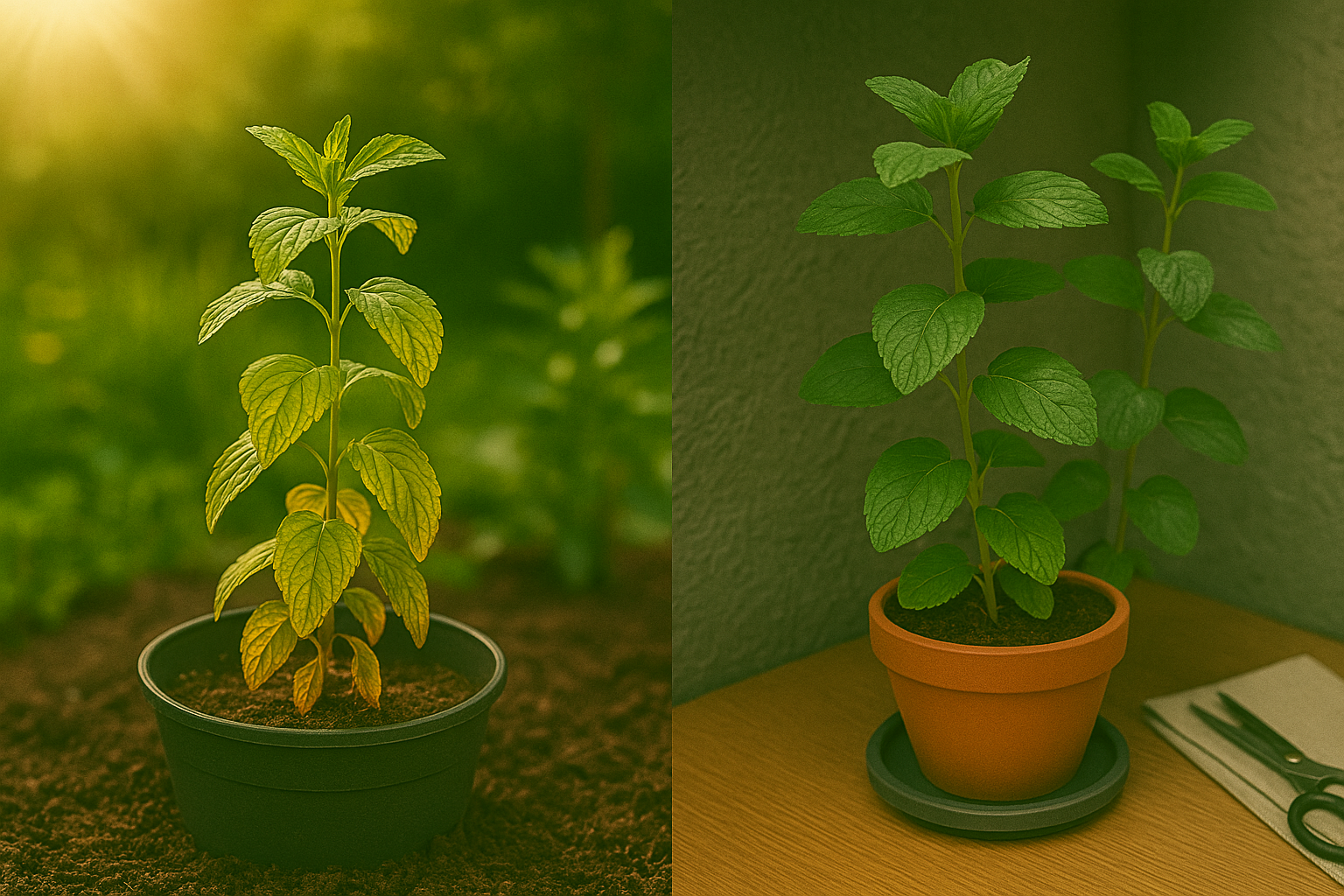
Mint plants can be surprisingly sensitive to sunlight, with both too much and too little causing noticeable problems. If your mint is getting too much sun, you’ll likely see drooping, wilted leaves that look dry and crispy, especially during hot afternoons. Scorched brown spots or faded, pale leaves are also red flags.
To help, relocate container mint to a spot with morning sun and afternoon shade, or use a light row cover to shield garden mint during peak heat.
On the flip side, if mint doesn’t get enough sunlight, it often becomes leggy, with long stems stretching towards light and fewer leaves. The flavor may weaken, and leaves often grow smaller and paler. Moving your plant to a sunnier spot—ideally where it gets 4-6 hours of direct light—can quickly restore its vigor.
Both extremes may invite extra trouble:
- Shady, damp spots foster fungal diseases like powdery mildew.
- Scorched, weakened mint is more prone to pests like spider mites.
Keeping your mint in a well-lit but protected location strikes the right balance, preventing many of these common sunlight-related issues and ensuring a lush, flavorful harvest.
Quick FAQ
Mint is known for its versatility and resilience, but a common question is whether it prefers sun or shade. The answer is that mint thrives best in partial shade, though it can handle full sun as long as the soil stays consistently moist.
If you’re growing mint indoors, place your pot near a bright window that gets a few hours of sunlight each day. Outdoors, choose a spot that gets morning sun and afternoon shade to help prevent the leaves from scorching in the heat.
A practical tip for beginners: use mulch around your mint to retain moisture and keep the plant happy during hot weather. Remember, wilting leaves or brown edges usually mean your mint is getting too much direct sun or not enough water.
In summary, mint enjoys a balance—think “dappled sun, damp soil.” Give your mint enough light to stay lush, but don’t let it bake in all-day sun, and you’ll have a robust, flavorful plant ready for all your recipes.
